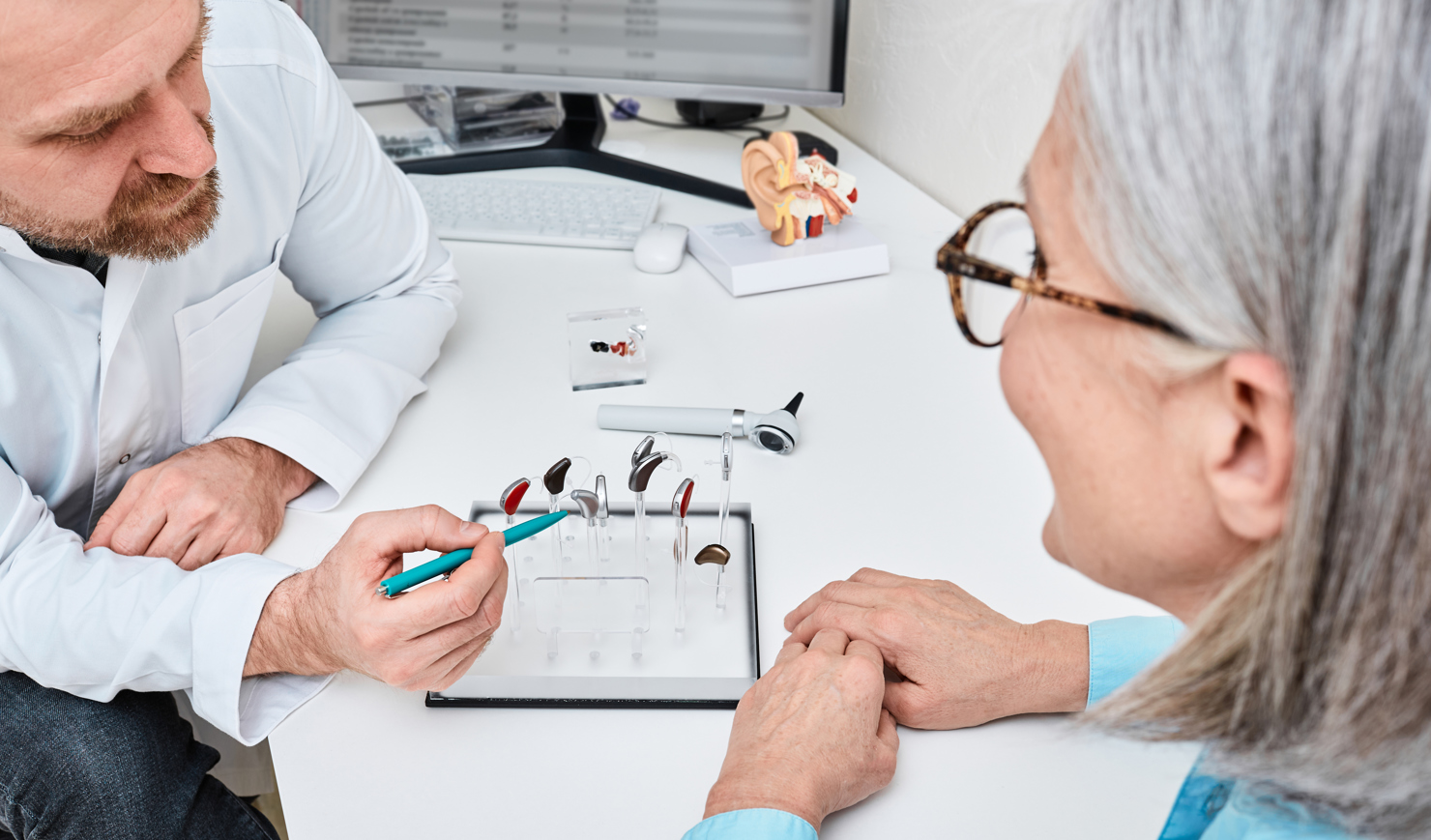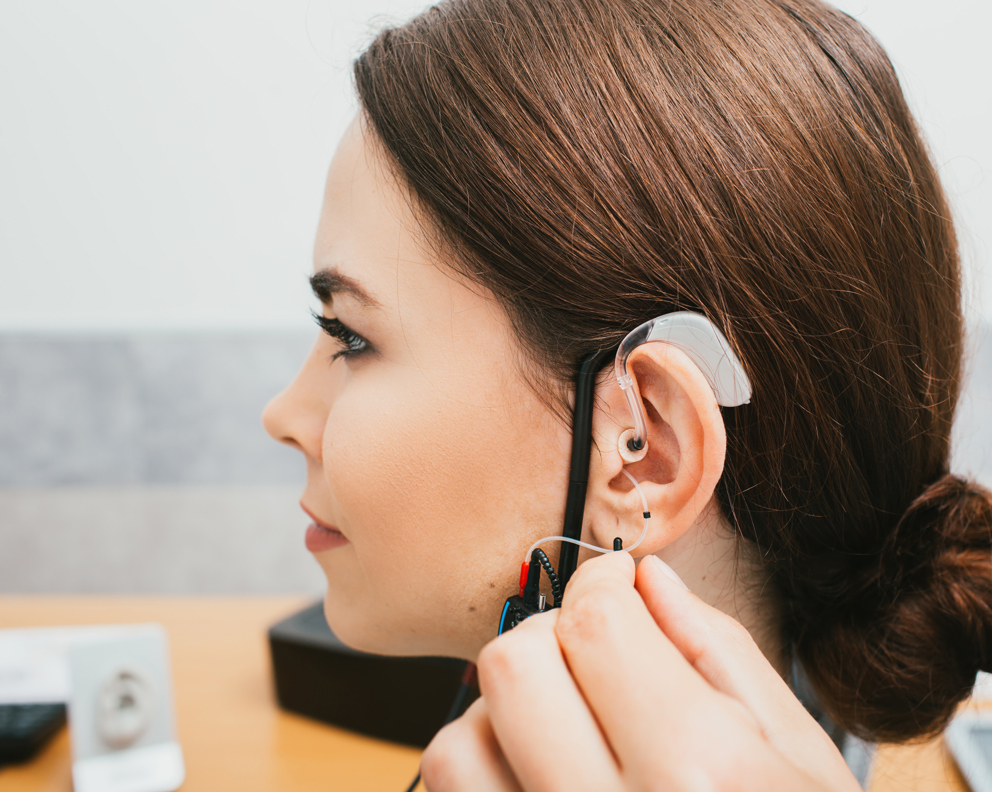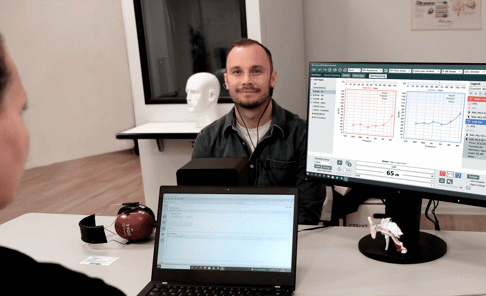
While Over-The-Counter (OTC) hearing aids may offer the benefit of affordability, they often do not provide optimal sound quality or fit for all users. Despite their limitations, OTC hearing devices are becoming increasingly popular as a more affordable alternative to traditional hearing aids. Clinicians are likely to see more and more individuals presenting to their office with existing OTC devices or an interest in these devices. Educating patients on these devices' limitations can be challenging, but providing quantitative data on their performance can help demonstrate their appropriateness for each patient.
With the recent FDA ruling that OTC hearing devices can be used without a medical exam; it is important that clinicians have a baseline of knowledge about these devices so they can ensure their patients – new and old – are properly educated on the use of OTC devices. These devices are approved for individuals over the age of 18 with mild to moderate hearing loss in the absence of other symptoms like dizziness, ear drainage, ear pain, visible deformity of the ear, sudden or fluctuating hearing loss, unilateral or asymmetric hearing loss, and tinnitus in one or both ears. It should be noted that although these devices are approved for those with mild-to-moderate hearing loss, they do not require a hearing exam and, thus, rely on individual perception of hearing difficulty.
Real Ear Measurements and OTC Hearing Devices

Real Ear Measurements (REM) are a powerful tool that can help audiologists optimize the sound quality and fit of traditional hearing aids for individual users. REMs are performed by placing a small microphone into the ear canal alongside the patient’s hearing device. Typically, the International Speech Test Signal (ISTS) or broadband noise signals are presented, and the output of the hearing device is measured in the individual’s ear. This testing is quick, easy, and non-invasive, making it an accessible tool for any clinic to demonstrate the fit of OTC devices. Click below to learn more about how to perform REMs.
While OTC hearing aids are designed to be pre-programmed for general use, they may not always provide optimal sound quality or fit for individual users. These limitations can be demonstrated by REM. Although OTC devices cannot be adjusted by an audiologist, their output can still be measured using REM and compared to target amplification for an individual’s hearing loss. Having this quantitative measure of performance can demonstrate to patients what they may be missing by using a pre-programmed OTC hearing device.
Free Guide
Everything You Need to Know About Real Ear Measurements (REM)
This guide will explain why real ear measurements are crucial in modern audiology and will dispel the misconceptions that may cause audiologists to avoid this test. We will also discuss the process for REMs, the benefits of this approach, and ideas to use REM in your clinics to set your business apart.

Speech-in-Noise Testing and Functional Gain

Speech-in-noise testing is another invaluable tool for audiologists during hearing testing. Individuals are most often presenting with hearing in noise difficulties and may seek out OTC devices for this reason alone. Just as speech-in-noise testing can be used to test individual’s abilities without hearing devices, and with traditional hearing aids, OTC device benefit can be examined with these tests. This can be done in a variety of ways depending on time, patient preference and history. If an individual presents to the clinic with existing OTC devices, a clinician may test the patient’s speech in noise abilities both unaided and with the OTC devices to demonstrate the benefit of the devices, or lack thereof. Additionally, if an individual is unsure if they want to purchase traditional hearing aids, or an OTC device, or even graduate to traditional hearing aids from an existing OTC device, a clinician can test speech in noise abilities with the OTC device and a hearing aid programmed to the individual’s hearing loss.
Practitioners can perform functional gain testing in the same conditions. Functional gain measures are conducted in the sound booth with pure-tone stimuli in the sound field. Patients are instructed to respond to sound in the same manner as in pure-tone audiometry. During functional gain testing, individuals are wearing their hearing devices to determine if they are providing appropriate access to sound. Just as this test is performed with traditional hearing aids, it can be performed with OTC devices to determine if hearing thresholds are improved with the devices on.
In conclusion, while OTC hearing devices may offer the benefit of affordability, they often do not provide optimal sound quality or fit for all users. Practitioners should be aware of these limitations and educate patients accordingly. The use of REM, speech-in-noise testing, and functional gain testing can provide valuable quantitative data to help clinicians demonstrate the appropriateness of OTC devices for individual patients.
While these additional tests can take up valuable clinic time, the Measure audiometer makes it quick and easy to transition from audiometric testing to REMs or speech-in-noise testing. Once audiometry is completed, the audiogram is automatically available in your REM screen – no need to enter values again.
The same goes for speech-in-noise testing. With Measure, practitioners can set their audiometry workflow to seamlessly move from pure-tone testing to speech-in-noise testing. Just as with REM, Measure allows you to quickly perform these tests giving you more time to counsel your patients on the difference between devices.
Other Blogs You Might Enjoy:

Top 6 Benefits Of Using Speech Mapping In Your Audiology Clinic
Speech mapping has revolutionized the field of audiology and the fitting process, enabling audiologists to efficiently verify hearing aid fittings through the use of actual speech signals. Speech mapping is the key to unlocking personalized, effective hearing aid fittings for your patients. This blog reveals the top 6 benefits of incorporating Speech Mapping in your clinic.

Are Real Ear Measurements Necessary?
Real Ear Measurements (REM) – also called Probe Microphone Measurements (PMM) – are considered the gold standard in hearing aid fitting and verification, allowing audiologists to determine whether a hearing aid user is receiving the precise level of amplification needed at every frequency to maximize their hearing. This blog explains how REM can improve customers’ hearing, as well as drive better business outcomes and serve as a key differentiator for hearing clinics.

Do OTC And DTC Hearing Aid Options Mean Trouble For Audiology Retailers?
Over-the-counter (OTC) and direct-to-consumer (DTC) options are set to disrupt the hearing care industry. Is your clinic ready for the challenges to come?
Don't Miss Out On the Latest Insights On Audiology
Sign up today to receive exciting updates, tips, and the latest newsletters from Auditdata.